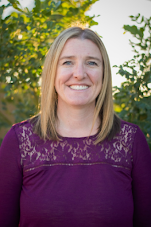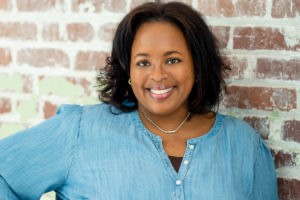Bill Davis, Lead Faculty, Department of Organizational Studies, and Sarah Korpi, Diversity, Equity, and Inclusion Director, Division of Continuing Studies Assistant Director, Learning Engineering Group, University of Wisconsin – Madison
 |
| Bill Davis |
Do you want to motivate and inspire your students to reach for higher goals? During our combined 37 years of teaching in higher education, we have had the opportunity to observe the evolution of online classrooms and the unique challenges they possess in terms of engagement. Below are the five key insights and ideas we believe are most relevant to establishing authentic human connections and a flourishing culture of care.
Students Matter | Authentic Human Connection
We believe students
matter, and they are the reason we exist. According to Schlossberg,
Lynch, and Chickering (1989, p.21), student success is dependent on the
degree to which students feel they "matter." The four dimensions of
mattering are:
- Attention
- Importance
- Ego-extension
- Dependence
 |
| Sarah Korpi |
Building authentic human connection with our learners helps
students feel seen and valued and that they belong in our classrooms, all things
that promote student persistence and success. According to Maggie Wooll (2021,
para. 6): "Human connection is a deep bond that's formed between people
when they feel seen and valued. During an authentic human connection, people
exchange positive energy with one another and build trust. Human connection
makes you feel heard and understood and gives you a sense of belonging."
Serving students by being positive, timely, and reliable shows them that you
care. What we model for our students through our actions and ways of being is
often reflected in how our students interact with each other in our courses;
leading by example and demonstrating the behavior we wish to see is powerful.
We can further promote student persistence and success by delivering high-quality
teaching practices, innovating to find new and better ways to serve and reach
students, and by providing caring consideration.
Good Leaders Understand the Culture and Context They
Lead, Teach and Coach In
Each group of students is unique, and what works well for
one group may not work well or at all for another. As educators, we are the
leaders of our classrooms. We understand the course content, the way the course
fits into the overall curriculum, the institutional context we teach in, and
the dynamics of our unique groups of learners. As the course leader, modeling
consistency and staying engaged with learners promotes student success.
Keep students in your line of sight. Involve and engage them
where you can, sharing information and rewarding and recognizing the good they
do, even if they haven't yet fully reached the learning outcomes. Help them
grow their skills, knowledge, and confidence levels by leading and teaching
with care. Most importantly, be mindful that some adult learners are connecting
to their education for the very first time. Some learners are reconnecting
after a significant break in learning. Taking the time to understand your
students' situations and the roles they balance is one easy way to promote
authentic human connection. In addition, this information can help you to plan
each week to serve and support them as they engage with your class and balance
their other responsibilities. Being aware of all support resources and sharing
them regularly helps normalize utilizing those resources in support of
learning.
Lead and Coach with Care
As you lead and coach with care in your online classroom, be
aware of your role's importance and purpose. Always have as a goal to provide
students with a meaningful and gratifying learning experience. Keep the main
thing the main thing, student learning. Lead with care and emotional
intelligence, having a high sense of self-awareness, social awareness,
self-management, and relationship management. Good leader-coaches understand
the content and culture they lead and the situational variables and dynamics in
an online classroom.
So, in every student interaction, work to connect with your
students, build valuable rapport and provide students with high-quality
engagement and feedback. Where you can, be proactive and take the initiative to
serve and coach them outside the classroom (one-on-one coaching via zoom or
phone, etc.). Be a positive role model, leading by example and putting forth
high-quality work, innovation, and caring in all the roles in which you serve
students.
Consider these suggestions:
1. Observe and listen to your student's passions and purpose,
recognizing any apprehensions they may have.
2. Lead with care when life happens and situations arise.
Set the right tone, show empathy and compassion as you listen, and provide
valuable advice, and coaching with care. Help students identify and eliminate
any road blocks to success.
3. As you coach, remember these tips from Project Manager
(2016):
- Coaching
Leaders:
- Unlock
potential
- Coach with
questions
i.
Ask:
1.
"What is the goal?"
2.
"What are you trying to achieve?
3.
"How can you get there?"
Coaching with care also means providing positive
encouragement to your students. Be positive, immediate, and reliable. The
impact will be building trust and demonstrating to students that you care.
Purpose, Passion, and Vision
Remember, it is an honor and a pleasure to share in our
students' learning journey. You will be sharing and working to enrich, support,
and empower your students, and many times they will present opportunities for
you to provide valuable advice or role modeling. Be aware of the vital role you
play. Value the time you share with each student in every class and work to
influence positive outcomes and meaningful results.
It's important to remind your students that the steps they
take to achieve their vision include their plans and the processes they
implement to achieve their goals. Goals allow students to focus on their
objective, mobilize to achieve a goal, and increase their performance (Locke
and Latham, 1968). Remind students of visualization techniques so they can
imagine how their life will look once they have achieved their goal (Mind
Tools, n.d.). Finally, engage in dialogue and help them see their progress and
define their purpose, passion, and vision if needed.
Purpose
Purpose provides students with a sense of meaning and guides
their life and career decisions. It helps them shape their goals and gives them
a sense of direction.
Passion
Passion is a student's sense of energy for something.
According to Hudson and McLean (2006), "Your passions are your internal
energy source, the fire or determination you have for reaching some destination
up ahead. They tell you why you are on this journey and what you want from
life. They are your push and pull." These energies might be derived from
achievement, a search for meaning, compassion/contribution, and play and
creativity. Every adult has the capacity to tap these passions.
Vision
Vision is what you hope the world will look like in the
future because of your commitments and actions today. An inspiring and
meaningful future vision can motivate and move you into action.
Identify and Overcome Barriers to Create Authentic
Connection
In the classroom, instructors can use barriers to learning
as opportunities to create authentic connection. Barriers create opportunities
for outreach and connection and can be celebrated as connection points. As
instructors, we can work to differentiate between practices that promote
authentic connection in the face-to-face classroom and those that promote
authentic connection in the online learning environment. Regardless of
modality, reflecting on and mindfully selecting engagement strategies creates
the platform for subsequent conversations about identified barriers, and
strategies learners can employ to overcome these barriers.
Our education, experience, and board experience in ADEIL - Association of Distance Education and Distance
Learning have instilled a strong belief that instructors are a
powerful force. They can be transformational servant-style leaders who are
authentic and genuine. Instructors can help students change their lives when
they choose to pursue higher education. Simply put, instructors can lead, lift,
and equip students for success.
According to Rich Diviney (2021), who authored The Attributes: 25 Hidden Drivers of Optimal Performance, "You can't hide you (authenticity)." Among the attributes, authenticity is the most important in building trust. Authenticity cannot be fake or copied. Consistency of action, thought and values is the simplest measure of authenticity. Consistency builds trust, and a lack of consistency builds doubt. When instructors demonstrate a positive attitude, lead with consistency and care, and continue to nurture students in their learning continuum, they become authentic leader-coaches. They help create the right learning environment in their classrooms.
References
Davis, B. (2021).
Balancing roles for adult learners. Retrieved from
https://www.uagc.edu/blog/balancing-roles-for-adult-learners
Davis, B. (2020).
Why passion matters to adult learners. Retrieved from
https://www.uagc.edu/blog/why-passion-matters-to-adult-learners
Diviney R.
(2021). 25 Hidden Drivers of Optimal Performance. New York. Random House
Hudson, F.M.,
& McLean, D.P. (2006). Life launch, a passionate guide to the rest of
your life. Santa
Barbara, CA: Hudson Institute Press.
Mind Tools (n.d.).
Locke's goal-setting theory. Retrieved from https://www.mindtools.com/pages/article/newHTE_87.htm
Project Manager
(2016). How to Give Feedback [Video]. Retrieved from https://www.youtube.com/watch?v=L8Mh3bikqS4















